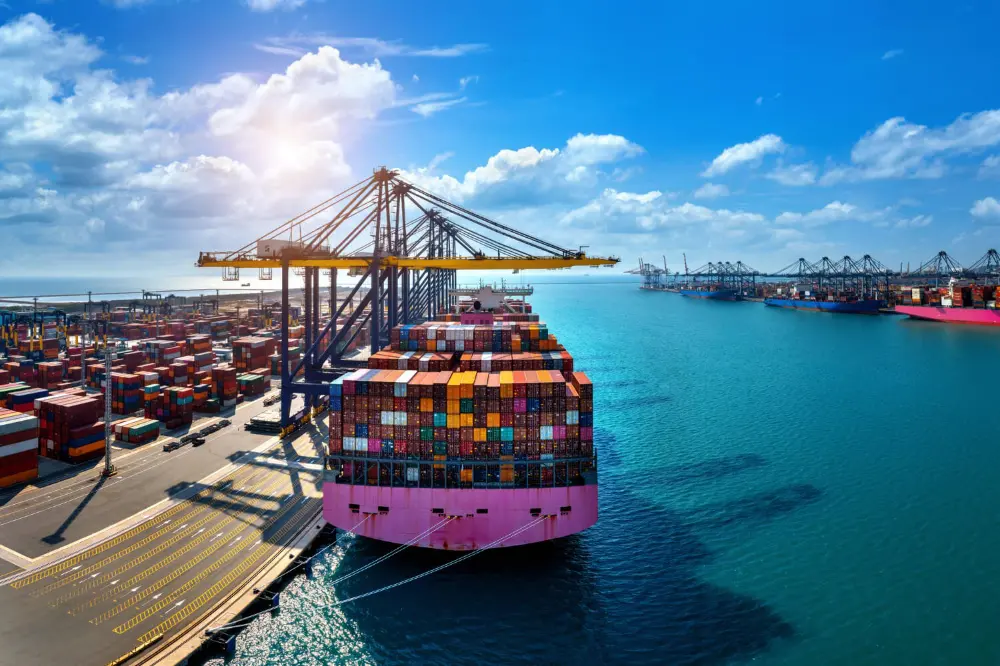If you have been struggling with getting your goods to your customers, we have the right solutions. Supply chains are an important part of your business. And so you shouldn’t let issues in this area hinder your company. With the appropriate strategies, you can get your supply chain back on track and running smoothly. But first, you need to identify issues you might be facing and how they affect your bottom line.
In this blog, we will look at what supply chain management is and how to overcome supply chain challenges. You will also get tips to best implement these strategies.
What Is Supply Chain Management?
Supply Chain Management (SCM) is the oversight of materials, information, and finances as they move from supplier to manufacturer to wholesaler to retailer to consumer. SCM integrates supply and demand management within and across companies. This type of management monitors raw materials as they turn into a final product in your customers’ hands. You need a high-performing supply chain to make a profit and deliver value to your target customers.
The Importance of Supply Chain Management
When you manage your own supply chain, you can cut down on business expenditures and deliver products to consumers faster. Consequently, it ensures customers receive high value from your goods and have a consistent supply.
Supply chain management centralizes control over the production, transport, and disbursement of an item. This means you must be careful about all supply chain problems and solutions because it is complex and has many different aspects.
Exploring the Different Challenges in Supply Chain Management
Called the ‘plumbing of global commerce’, supply chain management is critical to world economies. It is also vulnerable to faraway disruptions in this globalized era. This means suppliers position themselves in danger when getting into contracts with third parties to lower the cost of supplies.
Below are some of the biggest disruptors in 2023 affecting global supply chains.
Pandemic
During the height of the pandemic, travel restrictions and social distancing policies affected production and distribution. As the world entered an uncertain period, consumer purchases for certain products increased, resulting in shortages. Moreover, misinformation and new restrictions led to cross-border delays, affecting numerous sectors globally. According to McKinsey, 73% of executives reported problems due to this.
Resource Shortages
Insufficient supply of raw materials and resources increases demand and delays. This disrupts the availability of materials. Reduced availability of goods and services can limit production and increase prices. While shortages generally can cause backlogs of orders, the pandemic worsened the situation.
Inflation
Inflation is the increase in the price of a good or service or the devaluation of a currency. When there is inflation, the prices of materials and services pile up along the supply chain. And so, the end product has a higher cost. With a new, unplanned markup, you risk losing customers while your overhead keeps growing.
Port Congestion
The key contributing factor in port congestion is delivery delays and perishable goods spoiling due to long delays in processing. Congestion happens when ships arrive at the port area but cannot unload their freight because the station operates at maximum capacity.
Change in Market Trends
Consumer expectations and attitudes toward companies change all the time. New 2023 research indicates that customers choose affordable and sustainable clothing brands and thrift, trading for lower-cost products or skipping purchases entirely. In addition, lockdowns increased the demand for online retail services to an all-time high.
Strategies to Overcome Supply Chain Challenges
Solving global supply chain problems is a complicated issue. Supply chains are affected by a variety of things, from pandemics to political instability to natural disasters. While it might seem out of your hands, there are ways you can limit these factors. The best way to prevent or mitigate future catastrophes is to develop plans to help soften the blow.
Below are some strategies for how to solve supply chain problems.
Diversify Your Supply Chain Strategy
Companies need multiple suppliers. In other words, when you diversify your supply chains across different locations, you increase the likelihood of your company remaining stable. In addition, when you increase your supply sources, they will likely tap into new markets.
Identify Alternative Shipping
There are three modes of transporting goods: road, ship, or flight. Each form of transport offers its own set of benefits for suppliers. For an organization to have a resilient supply chain, it must have the flexibility to reroute if needed. You can even look for different transporters within that same route.
Make Product Changes to Sustainable Options
Sustainable options are renewable sources in the manufacturing process. It’s also about minimizing packaging waste by retrofitting goods with biodegradable packaging or supporting local economies through fair labor and trade practices.
Automation
Automation in supply chain management involves using management systems software and machines to handle menial data entry tasks, assemble machinery stores, and retrieve equipment from warehouses. This has the benefit of lowering labor costs, which means you can focus your capital elsewhere. Also, automation boosts how well your company works. It can keep running even after regular business hours.
Order Resources in Bulk to Prevent Shortages
Bulk purchase is another solution to supply chain problems. It is purchasing goods in large quantities with the intent of reducing per-unit costs. Since the supply chain prioritizes operational efficiency, by having a large amount of raw materials, you can maintain supply streams for longer periods. This approach gives you extra time to solve problems if something goes wrong earlier in your supply chain.
Additional Tips
Supply chain problems and solutions are complicated, but here are some additional tips to create suitable strategies:
- Develop strong partnerships with stakeholders. Remember: Cooperation and teamwork are crucial in building a successful supply chain.
- Optimize your inventory monitoring. This means adopting technologies that let you track your process. By analyzing your supply chain, you can predict future needs and act in time.
- Above all else, have a comprehensive risk management and crisis mitigation strategy. A mishandled crisis can lead to serious drops in profit.
Conclusion
Building a resilient supply chain management strategy is challenging. As we’ve gone through the supply chain problems and the solutions, they will greatly help you in your supply chain process. Typically, the strategies discussed in this article, including diversifying your supply chain, using sustainable resources, using automation, and much more, can improve your supply chain’s resilience.
FAQs
What are the current trends in problems in supply chain management?
The current trends in supply chain management are the ethics of AI and automation.
What are the leading supply chain issues for the future?
Cybersecurity is a leading issue. This is because as the digital migration continues, individuals and companies are at a greater risk of hacking.













